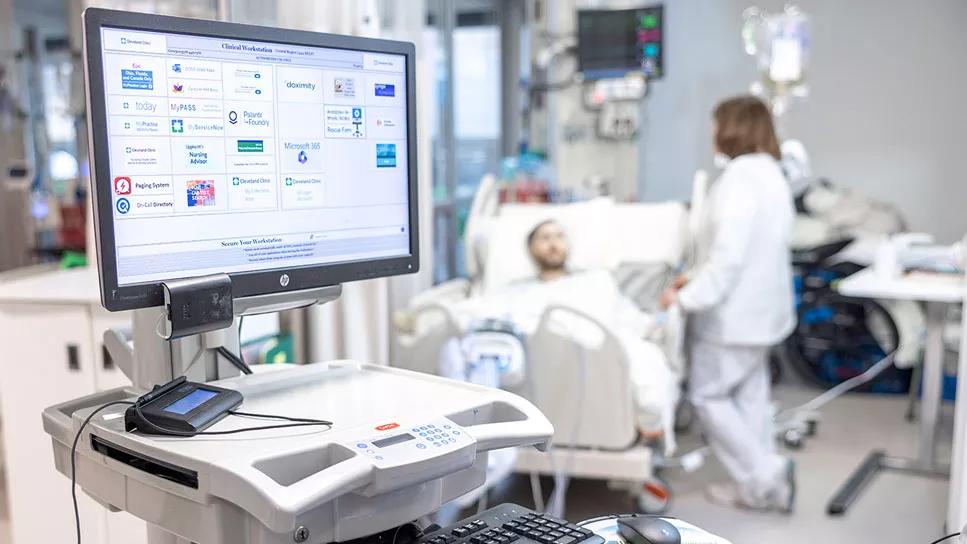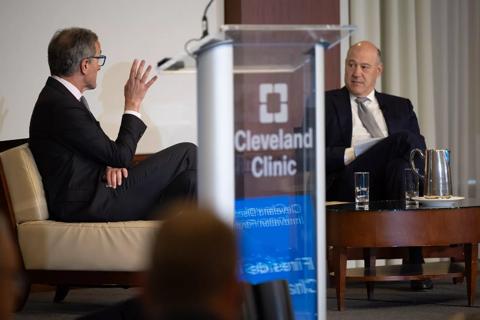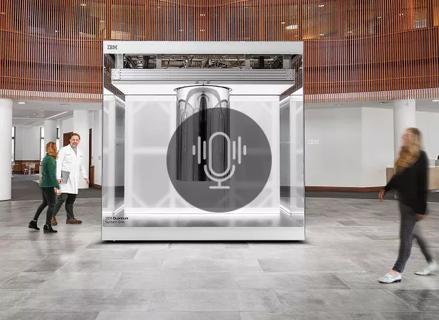Customized bots improve speed, efficiency by streamlining daily clinical, clerical tasks

Healthcare workflows can be complex and labor-intensive, often involving substantial paperwork and valuable caregiver time. Furthermore, inefficiencies in these systems can overload busy nurses with menial tasks and lead to wasted resources and revenue.
Advertisement
Cleveland Clinic is a non-profit academic medical center. Advertising on our site helps support our mission. We do not endorse non-Cleveland Clinic products or services. Policy
To combat these slowdowns and give caregivers more uninterrupted time for patient care, healthcare systems like Cleveland Clinic are increasingly turning to robotic process automation (RPA) to streamline manual processes, reduce the effort required to complete clerical tasks, and accelerate the speed and efficiency with which jobs are completed in the electronic health record (EHR) and ancillary systems.
“Robotic process automation enables a virtual 'bot' to perform computer-based tasks just like a human would,” explains John Crisafi, Nursing Analytics Manager of Cleveland Clinic’s Nursing Operations. “But what our team finds most intriguing is the technology’s potential to free nurses from some of the simple, repetitive processes that that prevent them from working at the top of their license.”
Dawn Rice, manager of Cleveland Clinic’s Utilization Management Resource Center, adds, “Automation allows us to offload simple tasks that don't require clinical judgment. By removing monotonous steps, we enable nurses and clerical support staff to focus on responsibilities that truly require their knowledge and expertise."
Sparked by a desire to accelerate time-consuming and error-prone clinical documentation processes, Crisafi and his team of technology analysts began working behind the scenes in 2021. The analysts began by meeting with Cleveland Clinic Utilization Management nurses to better understand their workflows and the logic behind each task. The process involved a painstaking step-by-step review of the applications currently in use, including a thorough analysis of possible scenarios and exceptions, explains robotic process automation developer Michael Nehas.
Advertisement
“When you’re dealing with clinical documentation, there’s no room for error,” he says. “Before we put a bot into production, we want to make sure our analysis is exactly right. Automation can help drive continuous improvement, but it’s only as strong as the data behind it.”
The team’s first two RPA bots, “Billy” and “Drew,” went live in January and March of 2022. Designed to record information in Epic (the medical center’s EHR) Billy routes each case by entering billing indicators to ensure that the correct type of bill is submitted for timely reimbursement. Drew, on the other hand works in Epic and CarePort (a third-party discharge planning and utilization management tool) to complete patient discharge reviews and queue them up to be sent to the payor.
“Before we had Drew, caregivers would log off at 4:00 or 5:00 p.m. and return the next day, only to find a backlog of discharge reviews pertaining to patients who had gone home overnight,” says Crisafi. “With the new workflow, the bot kicks in as caregivers leave for the day and runs every hour through the night. Nurses now return the next morning to a clean slate, which helps make their shift more productive.”
Billy’s contributions have been similarly helpful, Rice explains. “Although managing billing indicators is a relatively straightforward process, it is a repetitive one that takes nurses out of their standard workflow,” she says. “These bots allow our caregivers to focus on more important duties – those that require clinical acumen and human interaction.”
Advertisement
Among the tech team’s principal goals is to generate enthusiasm among the staff for the new custom-designed bots, says Nehas. “Our best ideas come from those who are actually doing the work,” he adds. “We want them to think of the bots as colleagues.”
To further engage staff in the process, the team created a survey that allowed caregivers to name a bot. The initial poll asked respondents to choose from a list of famous television moms with the goal of naming a bot that facilitates newborn reviews. A response rate of more than 75% resulted in two-way tie between Carol (Brady) and Judy (Jetson) and led to a runoff election in which “Carol” was the ultimate the victor.
“We’ve been thrilled by how fully the nurses have invested in the work,” says Crisafi. “Not only did the naming survey generate a lot of interest, it also eased nurses’ concerns about automation being a threatening or impersonal process.”
In addition to Billy, Drew, and Carol, several other bots are currently in use in Utilization Management at various Cleveland Clinic hospitals:
Paula – processes responses to enterprise physician advisor appeals, closes cases
Ella – processes electronic payor approvals
Bill Hold – holds bills in Epic while denials are appealed by Utilization Management and physician advisors
Blue Card OOS – queues out-of-state insurance plans for updates
FaxBot – distributes faxes from payors to caregivers for processing
Additional automations in development include a PowerPoint bot designed to generate monthly nursing quality presentations, and a bot capable of completing administrative recordkeeping for referral workflows.
Advertisement
Despite the relative newness of RPA, Cleveland Clinic’s Utilization Management bots have already led to big strides, says Crisafi. Utilization Management nurses are reporting fewer interruptions to their monthly workflows and are spending far less time performing billing workflows in the EHR. In addition:
“We’re eager to expand current automations and are always looking for opportunities to create new ones,” says Nehas. “It’s rewarding to see how efficiently these bots can support caregivers by running silently behind the scenes, where they are woven into the patient care ecosystem.”
Rice adds, “Our nurses and administrative team have eagerly adopted this emerging technology and are proactively involved in charting future uses for RPA. Caregivers are grateful for the bots, who have proven to be excellent teammates.”
Advertisement
Advertisement

Advanced software streamlines charting, supports deeper patient connections

Cleveland Clinic uses data to drive its AI implementation strategy

Cleveland Clinic and IBM leaders share insights, concerns, optimism about impacts

Cleveland Clinic neuromuscular specialist shares insights on AI in his field and beyond

Neurology is especially well positioned for opportunities to enhance clinical care and medical training

How technology is changing how and whom we hire

How a Cleveland Clinic/IBM quantum computer partnership aims to hasten discoveries

Discovery Accelerator Partnership with IBM Deploys Advanced Computing Technologies to Supercharge Healthcare Research